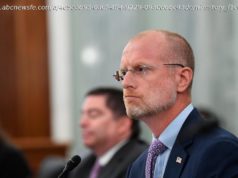Over the last 20 years or so, Disneyland Resort has secured incentives, tax protections and subsidies that, in total, would be worth more than $1 billion.
A few hours after the gates swing open at Disneyland and Disney California Adventure, the cars are still pouring into the massive 10,241-space parking garage.
They zoom into the six-story concrete structure, carloads of costumed kids, foreign tourists and graying baby boomers sporting Mickey Mouse ears, “Frozen” dresses and “Star Wars” backpacks.
The cash pours in too: Each vehicle pays $20 to park at the Mickey & Friends facility, $35 for a preferred space close to the escalators and elevators.
Even if the parking garage fills just half its spaces, it would still generate more than $35 million in annual revenue and easily hundreds of millions of dollars over the life of the structure.
That money all goes to Walt Disney Co. The city of Anaheim, which owns the garage and spent $108.2 million to build it, charges the company just $1 a year for the lease.
More than 20 years after Anaheim agreed to pay for the parking facility as part of Disneyland Resort’s expansion, it has become a symbol of the city’s complicated and increasingly tense relationship with its biggest and most powerful corporate citizen.
Over the last two decades or so, as Disney’s annual profit has soared, the company has secured subsidies, incentives, rebates and protections from future taxes in Anaheim that, in aggregate, would be worth more than $1 billion, according to public policy experts who have reviewed deals between the company and the city.
Disney has negotiated these pacts with a carrot-and-stick approach — one that has often included the company’s threat of directing its investment dollars elsewhere. The agreements have spurred development of billion-dollar projects, including the California Adventure theme park and the forthcoming Star Wars: Galaxy’s Edge area at Disneyland.
The Burbank company masterfully works the political system, sometimes deploying aggressive strategies that belie its carefully cultivated image. Support for various deals benefiting Disney has come from Anaheim City Council members who have received generous campaign contributions through a byzantine network of political action committees funded by the company.
Disney-backed candidates
Disney-opposed candidates
Disney spent heavily to sway an election in Anaheim — did it pay off?
But now, for the first time in Disneyland’s 62-year history, the entertainment giant is facing serious opposition from Anaheim politicians, including Mayor Tom Tait, who feel that the recent guarantees in particular were too much. The city’s finances are squeezed for a variety of reasons — it has, for example, unfunded pension liabilities of $590 million. Despite the tens of millions of dollars in tax revenue and high-profile benefits that Disney brings to Anaheim, some of the city’s working-class residents said they don’t see enough of the upside.
In a letter to The Times, Disney challenged that view. “Disneyland Resort has played a pivotal role in Anaheim as a job creator and economic engine,” the company said, noting that it is committed to investing more than $2 billion there in the next decade.
Faced with growing criticism inside City Hall, last year Disney stepped up its local political spending, contributing $1.22 million to 10 PACs that were involved in the November election, according to an analysis of campaign finance disclosures by The Times. The PACs, most of which also spent money on elections outside Anaheim, received funds from multiple sources, though Disney was often a significant donor.
Even with Disney’s large PAC contributions — which dwarfed the money raised by the candidates it opposed — two politicians supported by the company lost to reform candidates, flipping the balance of power on the council. Now, Disney’s ability to extract lucrative deals from the city is in question.
“Some of the big projects that they may be thinking about — some of the money they want to siphon off from the city — will probably get postponed,” said City Councilman Jose F. Moreno, who defeated incumbent Jordan Brandman, a beneficiary of more than $250,000 spent by Disney-backed PACs. “It is about being pro-neighborhood, pro-city.”
The election offered a measure of vindication for Tait, who for years has been the most prominent critic of the Disney pacts.
“A lot of these things aren’t a natural, normal thing for any city to do,” the mayor said. “It is way too much.”
The biggest Disney deals since the 1990s include the following incentives:
“Anaheim residents should ask themselves if the return on investment was worthwhile,” said Michael Thom, an assistant professor at USC and an expert on tax incentives. “If not, then it’s time to start asking elected officials why they continue to help Disney instead of spending the same resources on other things.”
Disney declined requests to interview company executives, including Chief Executive Robert Iger and Disneyland Resort President Michael Colglazier.
Become a subscriber today to support stories like this. Start getting full access to our signature journalism for just 99 cents for the first four weeks.
But in a statement, the company disputed The Times’ estimates and analysis valuing Disney’s Anaheim incentives at more than $1 billion, arguing that future benefits and protections to the company shouldn’t be part of the calculation. Two experts said the estimate is reasonable and that the deals should be included in any calculation of Disney’s financial benefit. “Of course they have value. If they didn’t, why did Disney want them?” Thom said.
Disney also said that its investments far outweigh the value of the deals from Anaheim and that it is contributing more than its fair share “despite what people with their own political agenda are insinuating.”
As Anaheim’s largest employer and taxpayer, Disney has been an undeniable boon to the once-sleepy agricultural town.
About 30,600 people work at Disneyland Resort, accounting for nearly 19% of Anaheim’s jobs, based on a recent city report. The Anaheim Resort District, which includes two Disney theme parks, the convention center and dozens of hotels, is expected to account for $171.9 million in tax revenue during the fiscal year that ends next June — or 43% of general fund revenue.
According to the company, in 2016 Disneyland Resort “paid more than $125 million in taxes, bonds, levies, fees and contracts, directly benefiting Anaheim, its residents and local schools.”
Disney has also taken steps to unburden Anaheim: Since 1992, the company has paid the city for police service at its resort property, and has done the same for fire and paramedic service since 2000; those contracts now generate more than $10 million a year for the city.
Many Anaheim stakeholders said that the company’s direct and indirect impact on the city is unmatched. “There would be no tourism here without Disney,” said Jay Burress, president of the nonprofit Visit Anaheim tourism bureau, which is partly funded by Disney tax revenue. “They are the hook that brings [people] here.”
City Councilwoman Kris Murray, a Disney supporter, said the deals with the company have been good for taxpayers. “The city has a long history of partnering with private investment to raise its revenue, rather than having to go to our residents and local businesses for tax increases,” she said. “We’ve been able to keep our taxes and fees lower than all of our neighbors.”
Disney also said it is the city’s largest contributor to local philanthropic endeavors, addressing issues including hunger, public health and education. The company said that in the last year, Disneyland Resort has given nearly $20 million to nonprofits that are mostly in Orange County, including more than $4 million to various causes in Anaheim. Among them is ACT Anaheim, an initiative Disney co-founded, that provides grants to nonprofits in the community.
“I have never seen a corporation that has taken so to heart their commitment to the surrounding community,” said Shelley Hoss, president of the Orange County Community Foundation, which manages ACT.
Disney critics acknowledge the company’s important role in the city. But they also note that Disneyland Resort is crucial to the company’s bottom line. Cowen & Co. analyst Doug Creutz calculates that during Disney’s last fiscal year, the resort accounted for about 20% to 25% of the $3.3 billion in operating income generated by Disney’s parks and resorts unit. In the company’s global stable of parks and resorts, only Walt Disney World Resort is more important to Disney’s finances, he said.
Disneyland Resort’s outsized success is why some believe the company, which returned $2.3 billion to shareholders in the form of dividends last fiscal year, should do more for the city that’s home to its most storied property.
Rising poverty and crime, as well as changing demographics, have all fueled some discontent and unrest in the city of nearly 350,000 people. And the growing Latino population — Anaheim is now 53% Hispanic — contributed to a change in local elections brought on by a 2012 American Civil Liberties Union lawsuit over the city’s allegedly discriminatory political system.
Even some Disney employees wonder whether the company — whose stock market value is about $152 billion — is squeezing more out of the city than necessary. Chris Shively, an Anaheim resident and server at Blue Bayou restaurant in Disneyland, drives by the Mickey & Friends garage each day knowing that city tax dollars are paying for the facility.
“It’s a company — they have their own best interests,” he said. “But it is definitely something where the company, Disney, got a great deal — a deal that we are paying for. Absolutely frustrating.”
Disney’s Anaheim deals represent only a portion of the overall incentives the company has secured.
There have been pacts for the construction of ESPN studios in Connecticut, new projects at Walt Disney World in Orlando and movies shot in production-friendly locales such as Australia. This year, Disney was awarded a $20.8-million subsidy to make “Captain Marvel” in California — the third-largest film incentive ever from the state.
Other entertainment companies also scour the globe for subsidies. But Disney is the master: The $866 million in incentives it secured for film production, real estate development and other projects from 2000 to 2016 far outpaced incentives won by its rival media conglomerates, according to IncentivesMonitor, a service of data firm Wavteq Ltd. Disney’s haul was more than double what Time Warner Inc., Comcast Corp., Viacom Inc. and 21st Century Fox Inc. each got over the same period. The Wavteq tallies, calculated in a report for The Times, exclude certain kinds of incentives, such as those that protect against potential future costs — like the entertainment tax exemption.
Some of the company’s boldest deal-making efforts have occurred in Florida. For example, the state allowed Disney to create a local government, the Reedy Creek Improvement District, which oversees an area that includes Disney World and enjoys some of the benefits of cities, such as the ability to issue municipal bonds.
In Orlando and Anaheim, Disney has successfully secured agreements by threatening to hold back expansions to its existing theme parks, said Richard Foglesong, author of “Married to the Mouse,” which details Disney’s business in Florida.
“They use strong-arm tactics in order to get the things they want from local government,” said Foglesong, a critic of the company. “At work is this very long-standing corporate culture, which says they are owed something from the public sector in return for their private investment.
Start
United States
USA — Financial Is Disney paying its share in Anaheim? The money battle outside the...






